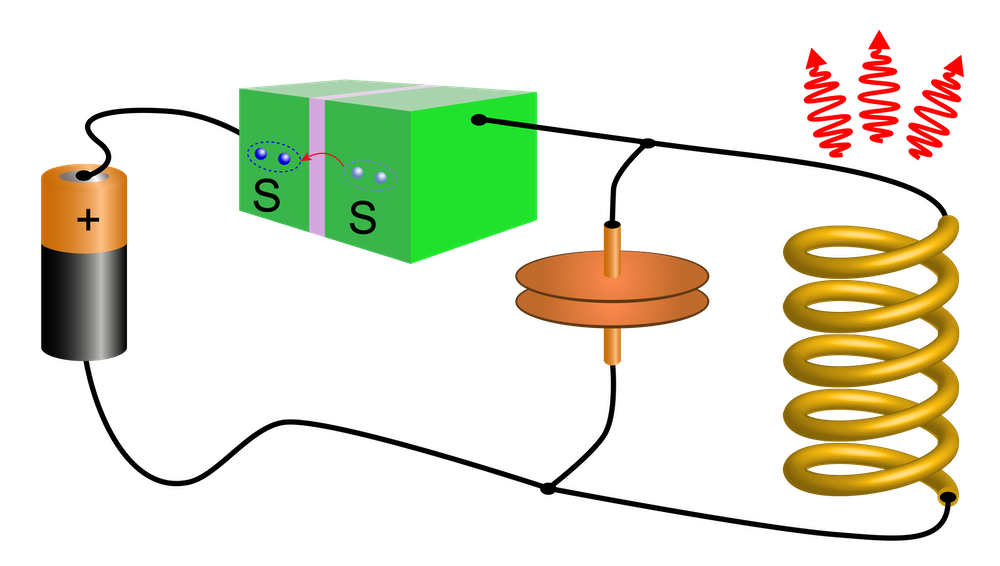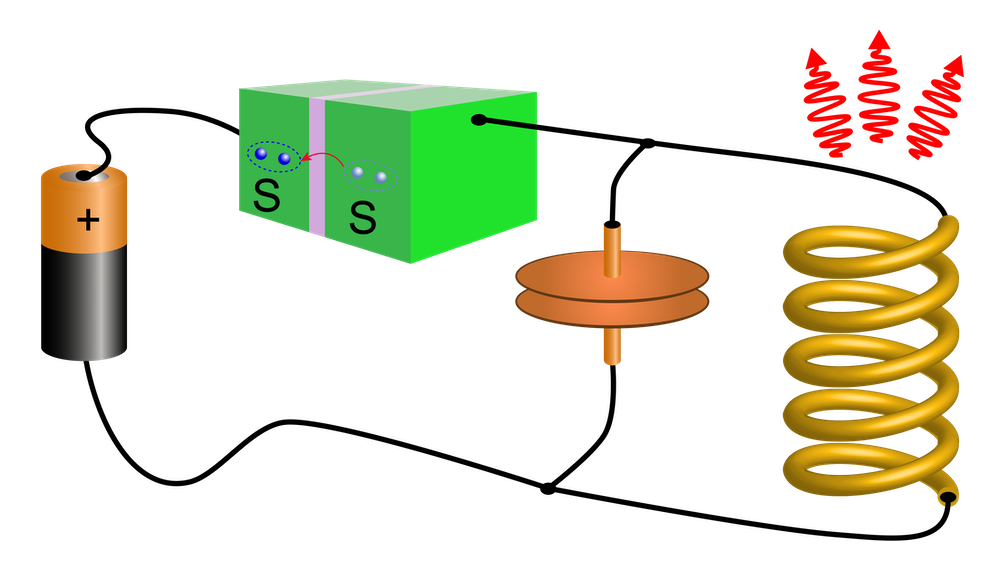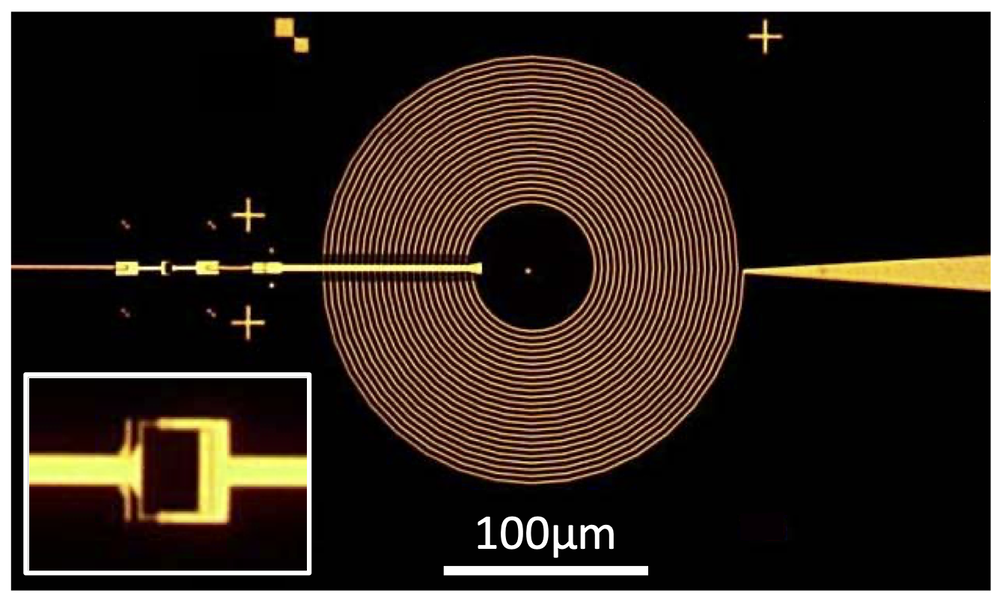Multiphoton Generator on a Chip
Producing entangled photons, whose properties are interdependent, is key to several quantum communication technologies. Most techniques for generating these photons make them exclusively in pairs, and those that can produce more than two photons are difficult to implement. But researchers have now made a chip-sized device that can generate bunches of up to six microwave photons at once [1]. The device may be useful for quantum technologies such as extremely secure quantum communication.
Pairs of entangled photons are often made in a process known as parametric down-conversion, which uses a so-called nonlinear optical medium to split a single photon into two lower-energy photons. But dividing the energy of a single quantum particle or quantum transition among more than two output photons—making a photon “multiplet”—is not easy. Superconducting circuits have been used to make such multiplets, but those devices were complicated, requiring a lot of hardware and multistep processes [2, 3].
Gerbold Ménard of the University of Paris-Saclay, Joachim Ankerhold of the University of Ulm in Germany, and their colleagues have devised a much simpler way of doing it. They use a superconducting circuit because it allows them to precisely control the energy of the charge carriers, which are pairs of electrons called Cooper pairs. These pairs are excited to a specific energy level and then, when each pair decays to its ground state, a predictable number of photons is emitted by the circuit. The circuit consists of a device called a Josephson junction coupled to a standard inductance-coil (LC) resonator, in which the current automatically oscillates at a particular frequency.
A Josephson junction consists of two superconducting materials separated by a thin slab of insulating material. If a voltage is applied across the Josephson junction, a Cooper pair can quantum-mechanically tunnel across the insulating gap, acquiring an amount of energy determined by the applied voltage. The pair can then shed its energy into the resonator circuit, which radiates the energy like an antenna in the form of photons. “The resonator plays the role of an energy dump for the Cooper pairs,” says Ménard.
The team has previously demonstrated photon emission from such a circuit but only in the form of photon pairs [4]. “By increasing the effective coupling between Cooper-pair transfer and the resonator, new processes become possible and even dominant,” says Ménard. In their latest, strongly coupled circuit, a single Cooper pair excited by its transfer across the junction can decay and cause the resonator to release several photons at once.
The circuit is etched from a 150-nanometer-thick superconducting niobium film deposited on quartz and measures just 500 or so micrometers from end to end; the most prominent component is the spiral wire of the inductance coil. The team’s measurements show that the chip-scale device can emit up to six microwave photons from a single Cooper pair. The researchers haven’t yet tested whether the photons are entangled, but Ménard says that theory predicts that they are. The team also expects entanglement based on indications from their previous observations of two-photon emission [4].
If the photons do prove to be entangled, the multiplets might be useful in a variety of applications. In quantum cryptography, for example, data encrypted in entangled photons and sent across a standard fiber-optic network can’t be read in transit without such tampering being detected by the sender and receiver. With entangled multiplets, it might eventually be possible to send data securely and simultaneously to several users. Or perhaps groups of entangled photons could be distributed among the separate circuits of a modular quantum computer to keep them all entangled with one another.
The team’s creation of a state with up to six photons is “an important achievement in their work,” says quantum physicist Jukka Pekola of Aalto University in Finland. “One gets it [for] free by just adjusting a dc voltage,” whereas previous experiments required operations involving a quantum bit. Christopher Wilson, a specialist in quantum computing at the University of Waterloo in Canada, agrees that the simplicity is key. “They are basically doing this just from a little on-chip device,” he says. Simply apply the voltage to the device, “and it starts spitting out photon multiplets.”
–Philip Ball
Philip Ball is a freelance science writer in London. His latest book is How Life Works (Picador, 2024).
References
- G. C. Ménard et al., “Emission of photon multiplets by a dc-biased superconducting circuit,” Physical Review X 12, 021006 (2022).
- M. Hofheinz et al., “Synthesizing arbitrary quantum states in a superconducting resonator,” Nature 459 (2009).
- S. Krastanov et al., “Universal control of an oscillator with dispersive coupling to a qubit,” Phys. Rev. A 92, 040303(R) (2015).
- A. Peugeot et al., “Generating Two Continuous Entangled Microwave Beams Using a dc-Biased Josephson Junction,” Phys. Rev. X 11, 031008 (2021).






